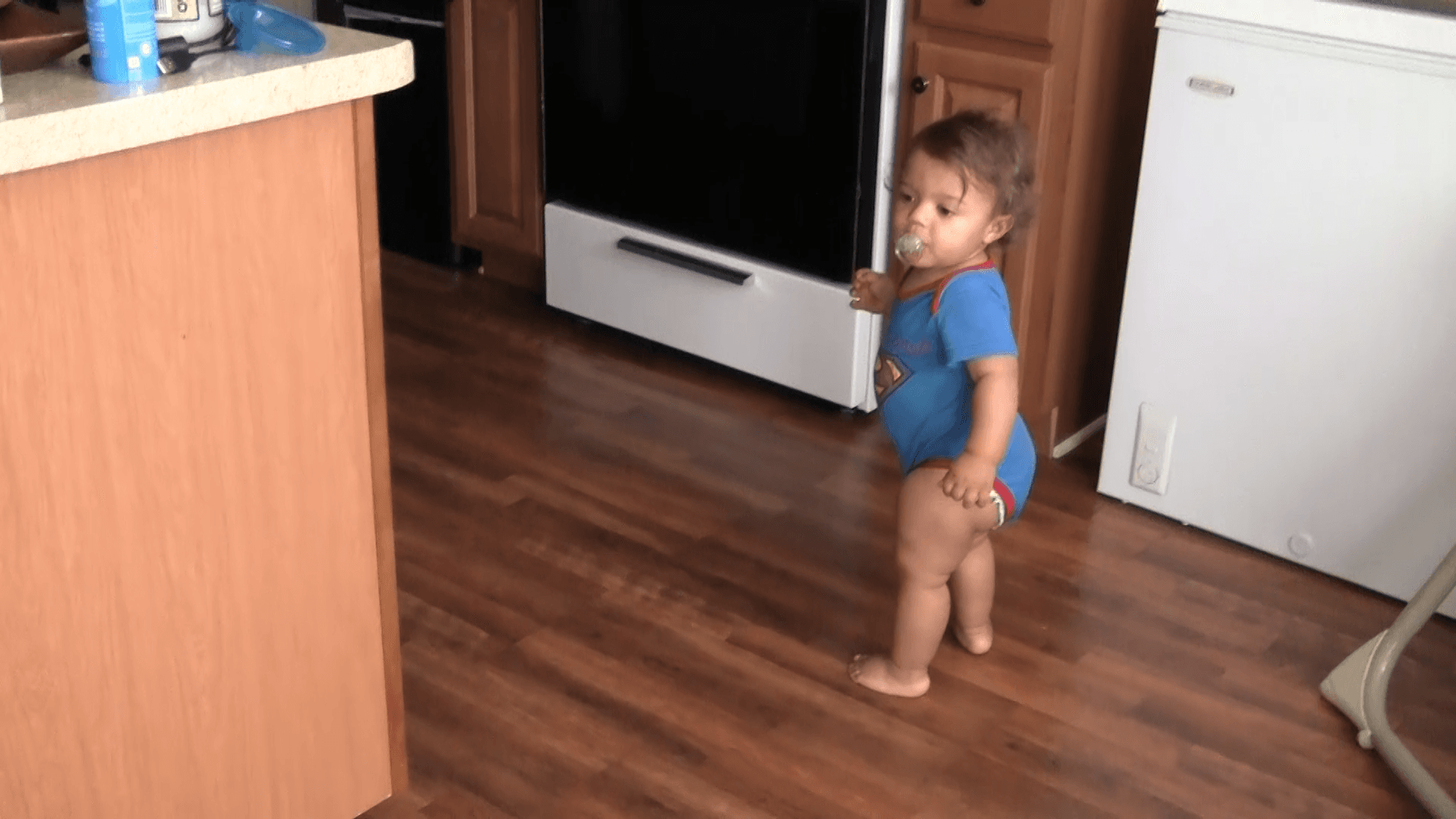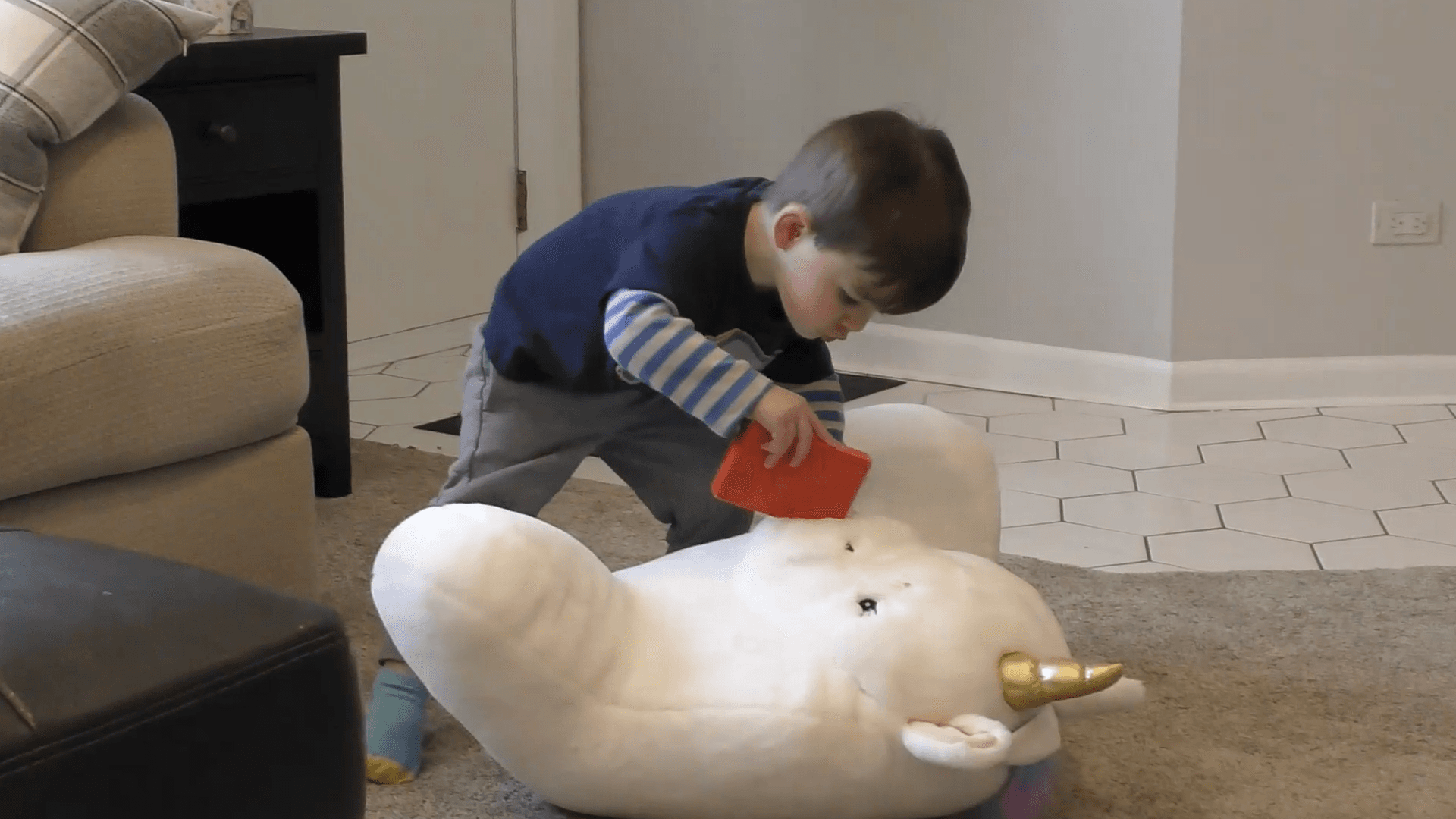motor
Able to bring hands to mouth

Able to move fists from closed to open

Able to string large beads onto a string

Able to turn pages in a book one at a time

Able to twist things with their hands like doorknobs

Catches large balls

Claps hands

Climbs on low furniture

Enjoys being active and playing games like tag, hide and seek, etc.

Goes up and down stairs with support

In simple play imitates others

Keeps head upright when in supported positions, e.g. sitting, standing, being held

Kicks large ball

Moves from tummy or back into sitting

Moves in and out of various positions to explore environment and get desired toys

Moves legs and arms off of surface when excited

Picks up small objects with thumbs and fingers

Pulls to stand and cruises along furniture

Reaches for toys while on tummy

Regularly moves with alternate leg and arm movement, e.g. creeping, crawling

Releases objects into a container with a large opening

Rolls from back to tummy and tummy to back

Runs

Sits and reaches for toys without falling

Sits without support

Squats to pick up a toy

Stands alone and takes several independent steps

Stands on tiptoes

Starts to jump with both feet leaving the ground

Starts to move with alternate leg and arm movement, e.g. creeping, crawling

Uses hands to support self while sitting

Uses thumb and pointer finger to pick up tiny objects

Walks independently and seldom falls

When walking, able to pull toys behind them

While lying on back, reaches both hands to play with feet

While lying on back, transfers toy from one hand to the other

While lying on tummy, lifts and holds head up

While lying on tummy, pushes up on straight arms

While lying on tummy, supports self on arms

While standing with support, accepts entire weight with legs

sensory
Able to calm with rocking, touching, and gentle sounds

Able to scribble and draw simple shapes

Able to take off articles of clothing

Brings hands and objects to mouth

Develops depth perception

Enjoys a variety of movements

Enjoys new toys or objects

Experiments with the amount of force needed to pick up different objects

Explores and examines an object using both hands and mouth

Explores toys with hands, fingers and mouth

Eyes track together by 3 months

Focuses on objects near and far

Helps wash hands

Helps with getting dressed/undressed

Investigates shapes, sizes, and textures of toys and surroundings

Knows at least one color

Looks at people and objects

Observes environment from a variety of positions – while lying on back or tummy, sitting, crawling, and standing with assistance

Pours liquid from large pitcher to cup

Sorts shapes and colors

Stacks 5 or more small blocks or toys on top of each other

Stacks two objects or blocks

Takes toys apart and puts them back together

Turns several pages of a chunky board book

Uses both hands to explore toys

Uses crayons, pens, or markers to make marks on paper

While lying on back, attempts to reach for a toy held above their chest

While lying on back, keeps head centered to watch faces or toys

While lying on back, visually tracks a moving toy from side to side

feeding
Able to eat soft finger/table foods, e.g. yogurt, bananas, ground beef

Begins to eat baby safe foods, other than milk - such as pureed or soft solid foods

Begins to use an open cup

Consistently gets a utensil to their mouth

Consumes about 1,000 calories a day

Drinks 2 oz. to 4 oz. of breast milk/formula per feeding

Drinks 4 oz. to 6 oz. of breast milk/formula per feeding

Drinks from a cup with one hand

Eating an increasing variety of food

Eats between 750-900 calories per day, including 24 oz. of breast milk/formula

Experiments with food using utensils and hands

Explores food and attempts to finger feed self

Finger feeds self

Holds and drinks from a cup

Latches on to nipple or bottle

Moves food from front of mouth to back

Moves tongue forward and back to suck

Stays full longer after eating

Sucks and swallows well during feeding

Uses a fork

Uses a spoon

When hungry will open mouth for breast or bottle

communication
Ask “what” and “where” questions

At least 50% of speech is understood by caregiver

Babbling has sounds and rhythms of speech

Begins to giggle or laugh

Begins to use 2 word phrases

Begins using hand movements to communicate wants and needs, e.g. reaches out hand to give/take objects

Can identify 1-2 body parts when named

Can say their own name

Combines consonants and vowels in different ways e.g. ahhh-b, mmm-uuuh, eee-p

Consistently imitates new words

Coos and smiles

Copies others

Cries differently for different needs, e.g. hungry vs. tired

Follows 2-step related directions, e.g. “Pick up your coat and bring it to me.”

Follows simple directions, e.g. "Come here"

Follows some directions when paired with a gesture

Imitates simple words and actions

Imitates speech sounds

Listens and responds when spoken to

Looks at familiar objects and people when named

Makes different kinds of sounds to express feelings

Makes different vowel sounds, e.g. eee, ooo, ahh, uh

Makes eye contact

Meaningfully uses “mama” or “dada”

Names objects and pictures

Notices toys that make sounds

Participates in two-way communication

Pays attention to where you are looking and pointing

Points at familiar objects and people in pictures when named

Points to objects they want

Quiets or smiles in response to sound or voice

Reacts to sudden noises or sounds

Recognizes sound of their name

Repeats words overheard in conversation

Responds to “no”

Says 3 or more words

Shows interest in faces

Shows interest in pictures

Shows recognition of commonly used words

Turns head towards sound or voice

Understands action words

Understands “in” and “out”

Understands most simple sentences

Understands new words quickly

Understands “why” questions

Uses 1 or 2 words other than "mama" or "dada"

Uses at least 50 words

Uses babbling to get attention

Uses gestures and words during pretend play

Uses simple gestures, e.g. raises hands to be picked up

Uses simple pronouns (me, you, my)

Uses smiles, sounds, or movement to get attention

Uses some plurals, e.g. “dogs”
